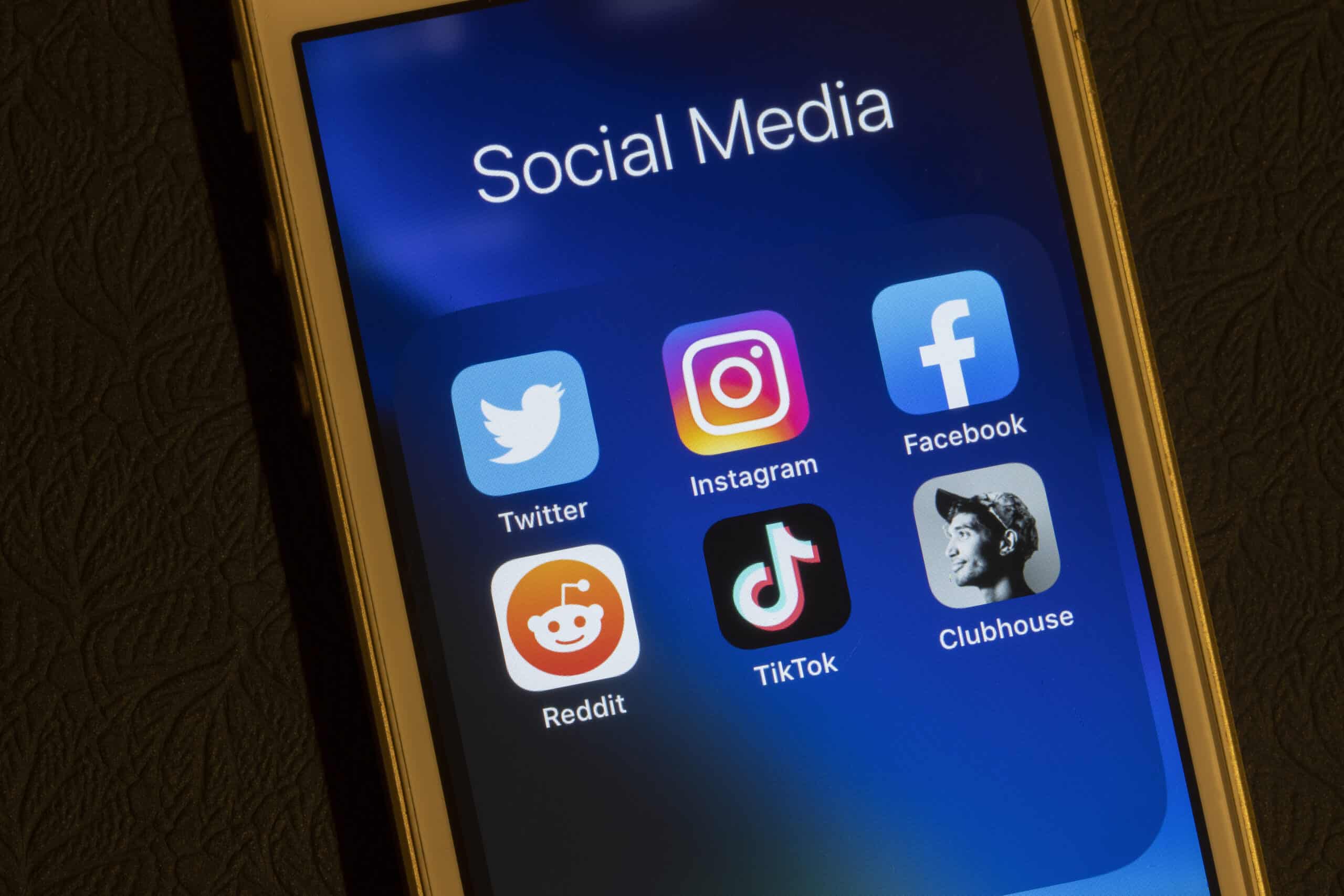Oh, how the digital world has spun! From simple texts to flashy reels, the metamorphosis of social media is something straight out of a tech fairy tale. Those pixelated avatars, quirky status updates, and the charming chime of a new message – it all takes us back, doesn’t it?
Diving into the archives of social media history, we’re about to look back at some of the oldest social media sites that started it all. These pioneers were the unsung heroes, setting the stage for our modern-day Insta-love, Twitter (X) banter, and TikTok jives. Ready for a trip down social media memory lane? Let’s go!
Before Social Media: A Glimpse into Early Online Interaction Platforms
Before the dawn of retweets, shares, and DMs, cyberspace bubbled with innovative platforms that stitched together the fabric of early digital social interaction. It’s wild to think about, but let’s step into our digital time machine, shall we?
Bulletin Board Systems (BBS)
Before the internet became a household name, Bulletin Board Systems, or BBS, served as a vital link for tech enthusiasts worldwide. Founded by Ward Christensen and Randy Suess in 1978, BBSs were computer servers running custom software.
Users, connecting via modems, could share software, read news, and engage in discussions, much like the forums we see today. They were the predecessors to modern forums and chat rooms. Users would dial into these systems and communicate through ASCII interfaces.
But as the 90s rolled in, bringing along the World Wide Web and advanced web-based forums, the popularity of BBS waned. Though some BBS platforms still exist, they’re mainly relics of a bygone era.
Usenet
Fast forward to 1980. Enter Usenet, the creation of Tom Truscott and Jim Ellis. It was a decentralized, worldwide distributed discussion system. Rather than just conversations, Usenet facilitated the exchange of articles between users on various topics.
Think of it as a hybrid between email and web forums. It was primarily text-based, and users needed newsreader software to access the discussions. While not as popular in today’s meme-driven culture, Usenet lives on, especially among tech aficionados and research communities.
Internet Relay Chat (IRC)
Eight years on, the digital landscape buzzed anew with Jarkko Oikarinen’s 1988 invention: the Internet Relay Chat or IRC. This was the era’s version of instant messaging. Users could join channels (designated by a hashtag, no less!) related to a plethora of topics.
If BBS was a community center and Usenet the town’s newspaper, IRC was the bustling café where real-time conversations flowed endlessly. Its text-based interface, real-time communication, and topic-specific channels made it the go-to for online communities.
Despite the advent of more advanced messaging platforms, IRC remains beloved. A vintage wine in a world of craft beers, it still holds a special place for many.
So, the next time you shoot a quick message or post an update, remember the pioneering platforms that started it all. These digital dinosaurs, in their prime, were just as revolutionary as any app we download today.
Pioneers of Social Media: The oldest social media sites
Before the era of Instagram selfies and viral TikTok dances, a different breed of platforms paved the digital way. Dive into a nostalgic journey with the pioneers of social media, where virtual friendships began, and online communities flourished. Ready for a trip down memory lane?
SixDegrees.com (1997-2001)

SixDegrees.com entered the scene as the creation of Andrew Weinreich in 1997. Taking inspiration from the six degrees of separation concept, it aimed to connect everyone through mutual acquaintances.
Profiles were simplistic, with basic details, a friend list, and a network view to visually represent connections. What was groundbreaking? The idea of “friends of friends,” which laid the foundation for many future platforms.
It quickly became a go-to site for its pioneering concept. SixDegrees even incorporated a feature where users could invite others not registered on the platform, a precursor to the “find your friends” functionality we know today.
However, by 2001, the competition had grown fierce, and with mounting technical challenges, it faded into the annals of social media history. Despite its demise, Weinreich’s vision paved the way for the interconnected digital world we now inhabit.
The founder even went on to create a dating site called MeetMoi, which was later sold to the parent company of Match.com.
LiveJournal (1999-Still Active)

Brad Fitzpatrick brought the intimate world of journaling online with LiveJournal in 1999. Targeted at people who loved chronicling their lives, this platform was a mishmash of personal blogs with a communal spirit.
Unlike other platforms, LiveJournal was all about self-expression. Users had journals where they could write posts, share images, and even categorize their entries by mood, thanks to fun emoticons.
The sense of community was deepened through “friends lists,” where users could follow others’ journals. Additionally, its “Communities” feature was a hub for shared interests, be it fandoms or philosophy.
Despite its strong start in the U.S., LiveJournal found a passionate user base in Russia. However, as the platform evolved, several controversies arose, especially around censorship, affecting its global reputation. Its golden age might be behind it, but LiveJournal lives on in Russia, after being bought by SUP in 2007.
Friendster (2002-2011)
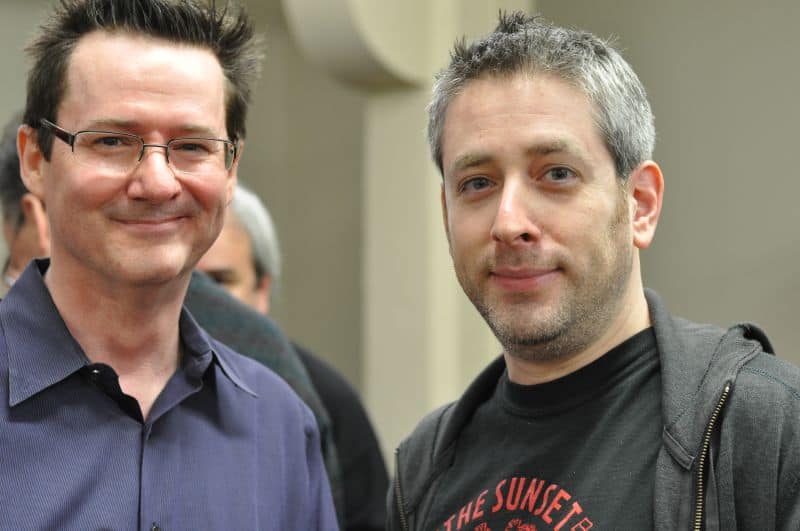
In 2002, Jonathan Abrams embarked on a mission to mimic real-world social networks digitally, and Friendster was born. The platform’s key attraction was the “Circle of Friends” feature.
Users created profiles, connected with friends, and could then view network connections up to three degrees away. Think of it as an early version of LinkedIn’s “connections of connections” but for leisure. A distinctive feature? Testimonials! Friends could vouch for you, making it a blend of social networking and character references.
In its heyday, Friendster was the toast of the town, even turning down a $30 million buyout offer from Google. However, as with many digital tales, the rise was accompanied by a fall.
With mounting technical issues and the advent of Facebook, users began jumping ship. By 2011, Friendster pivoted, reinventing itself as a gaming platform, but its social networking days were firmly in the rearview mirror.
LinkedIn (2003-Still Active)
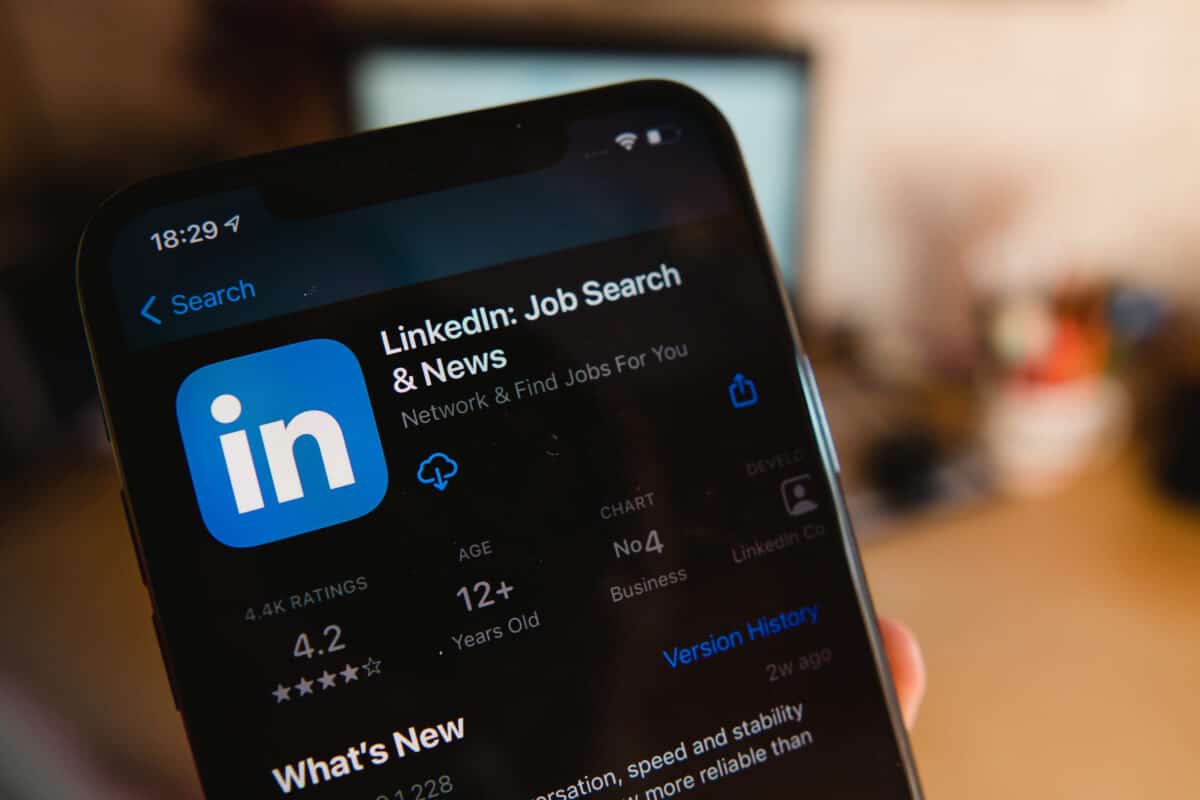
©Clara Murcia/Shutterstock.com
In a world of casual connections, Reid Hoffman envisioned a more professional online space. Enter LinkedIn in 2003. The platform was all business. Profiles resembled online resumes, complete with endorsements.
The “Connections” feature was LinkedIn’s heartbeat, where users networked with professionals and viewed mutual connections. One notable feature was its “Recommendations,” where colleagues could vouch for one’s skills and expertise.
But LinkedIn wasn’t just an online resume; it introduced the world to “LinkedIn Learning,” offering myriad courses, and “LinkedIn Jobs” revolutionized online job hunting. Today, with over 700 million members, while other platforms have seen ebbs and flows, LinkedIn stands tall, reaffirming that business and social can, indeed, mix well.
MySpace (2003-Still Active … Kinda)
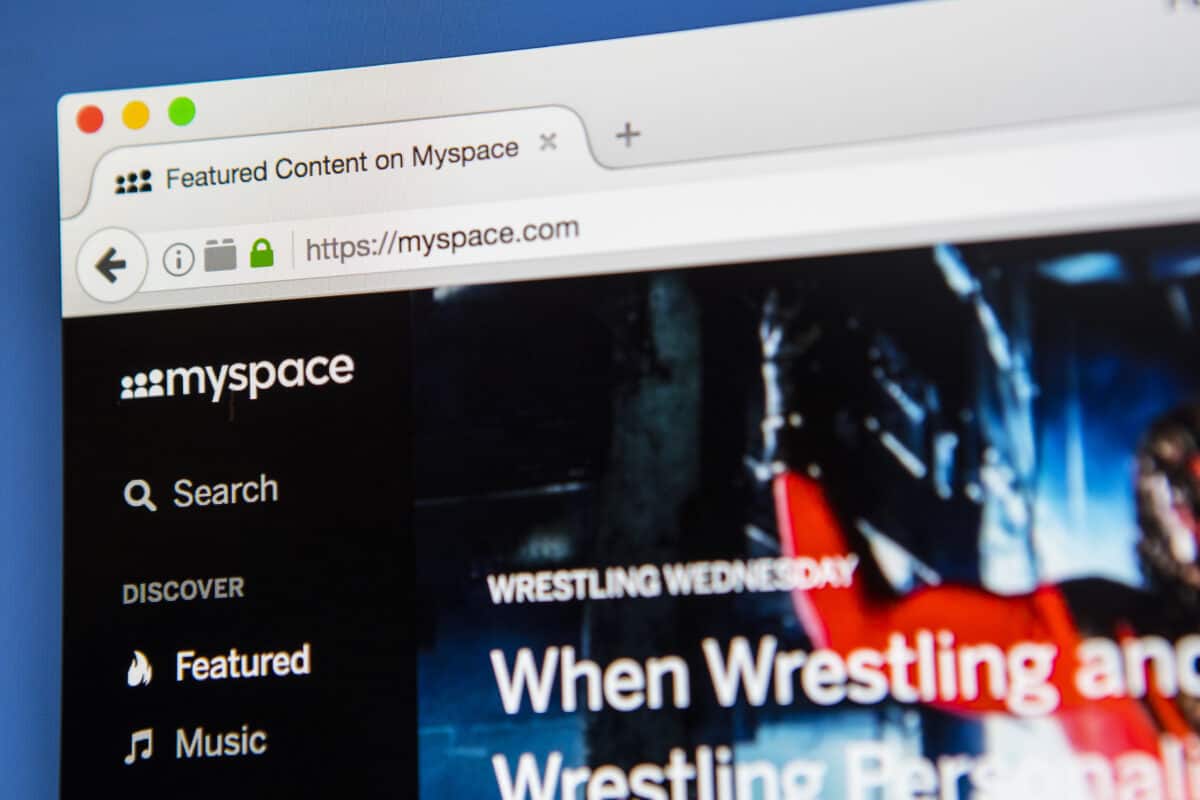
©chrisdorney/Shutterstock.com
The world of social media got a hefty dose of glam when Tom Anderson and Chris DeWolfe introduced MySpace in 2003. The platform was a canvas for self-expression.
Users designed their profiles with background images, music playlists (who could forget your “Top 8” friends), and more. Those customized profile backgrounds were like the digital jackets of your soul!
Budding musicians and bands, notably the Arctic Monkeys, owe their big break to MySpace. It wasn’t just a social network; it was the launchpad for many indie artists.
Yet, with time and the rise of Facebook, MySpace’s influence waned. After multiple ownership changes and attempts to reinvent, it pivoted more toward the entertainment industry. Today, it’s a platform where artists, photographers, and musicians showcase their talent, but its social networking prime feels like a distant memory.
Hi5 (2003-Still Active)
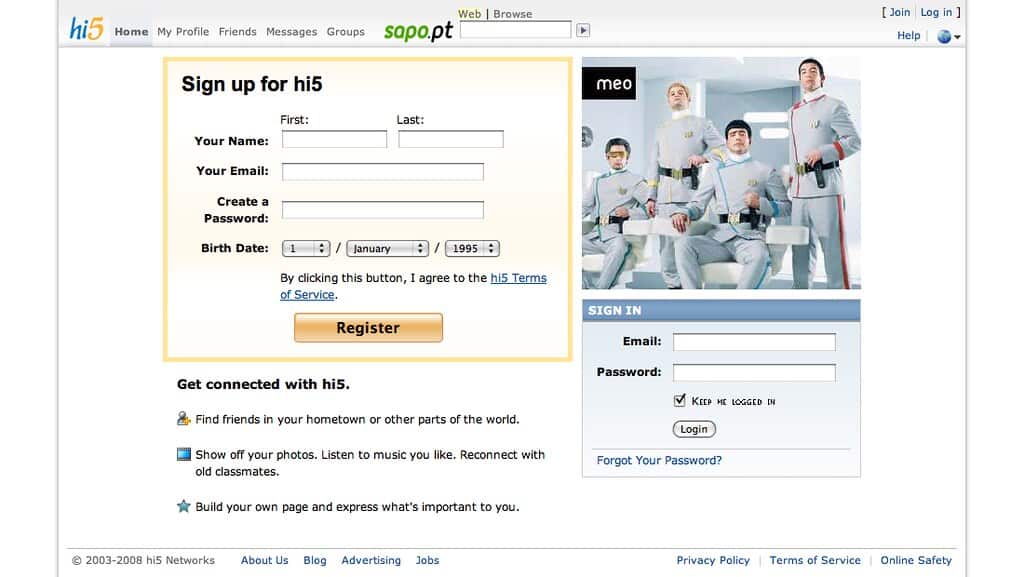
©Gustavo da Cunha Pimenta / CC BY-SA 2.0 – Original / License
2003 seemed to be the year of social networks, and joining the party was Hi5, crafted by Ramu Yalamanchi. Targeted primarily at a younger demographic, it had several quirky features like “Pets,” where users could virtually ‘buy’ and ‘sell’ their friends.
Profiles consisted of photos, a friend network, and user testimonials. One of its standout functionalities? Themes! Users could customize their profiles with various skins.
Hi5 was especially massive in Latin America. However, with competition from other networks and a lack of distinct evolution, its popularity in many regions waned. It’s still alive and has pivoted to a social discovery site with dating features, connecting users based on interests and location.
Orkut (2004-2014)
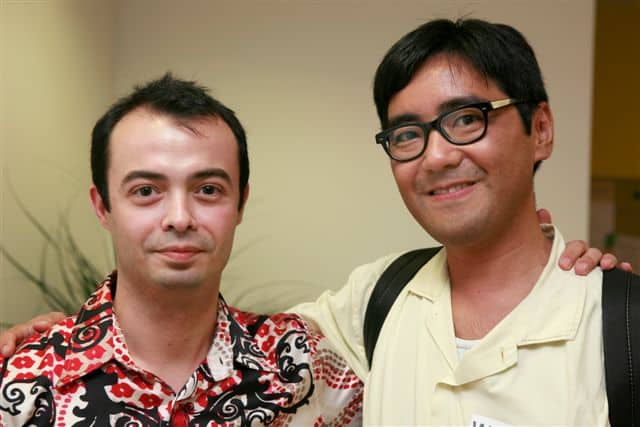
The thing about Orkut is that it wasn’t just another platform; it was Google’s first foray into social networking. Created by Orkut Büyükkökten, the platform was huge in countries like Brazil and India.
User profiles showcased friends, personal testimonials, and received “scraps” (basically public messages). The heart of Orkut? Communities! From Harry Potter fan clubs to academic discussions, these communities were buzzing.
But all wasn’t rosy. The platform faced numerous controversies, especially around user privacy. With rising competition, primarily from Facebook, Orkut’s global user base diminished. By 2014, Google decided to pull the plug, but Orkut’s impact, especially in certain regions, was undeniable.
If you check out the Orkut site today, you’ll find a message from the founder hinting and teasing at a new version of the site in the works. Who knows, maybe it’ll come back on the scene and be the next must-have social app!
Bebo (2005-2019)
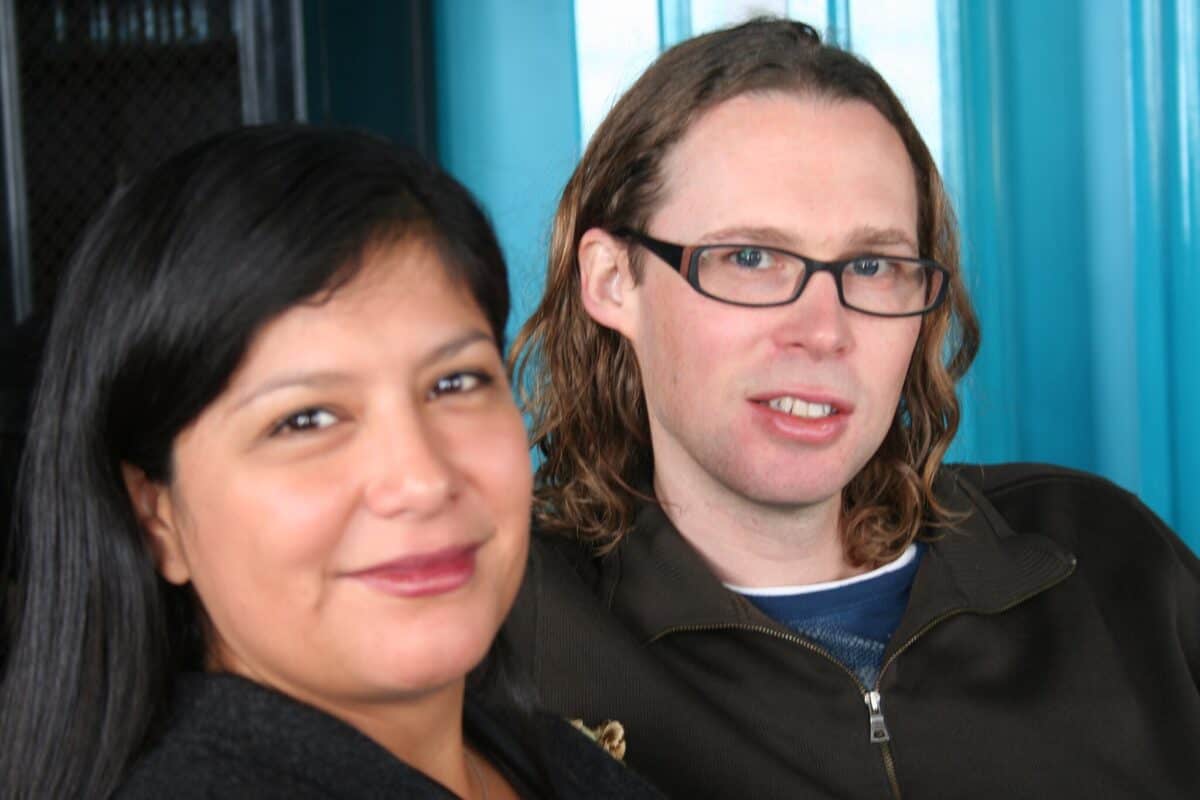
Bebo was the brainchild of Michael and Xochi Birch in 2005. Targeting the teen demographic, its interface was colorful and interactive. Profiles were unique, thanks to the “whiteboard,” a space where friends could post doodles and messages. Users could also “share the luv” – a daily, limited-use feature to show appreciation.
Rising rapidly in the UK, Bebo became one of the region’s leading social networks. AOL saw potential and acquired it in 2008, but this was the beginning of the end. With management issues and intense competition, by 2019, after multiple relaunch attempts, Bebo shut its digital doors.
The Birches went on to other ventures, including a tech incubator called Monkey Inferno. However, Bebo’s story remains a cautionary tale of rapid rise and fall in the digital age.
Wrapping Up
Looking back at social media’s evolution feels like flipping through an old yearbook. From the charming days of Friendster and MySpace to the reigning champions like Instagram and Twitter, it’s a testament to digital adaptability. Today’s favorites, as history shows, could be tomorrow’s nostalgic tales.
The ebb and flow of digital trends are unending. As users, our preferences and tech advances dictate the narrative. Platforms may rise and falter, but our shared digital journey, filled with innovations and memories, presses on. As for what’s next? Well, history is still in the making.
The image featured at the top of this post is ©iStock.com/hapabapa.
